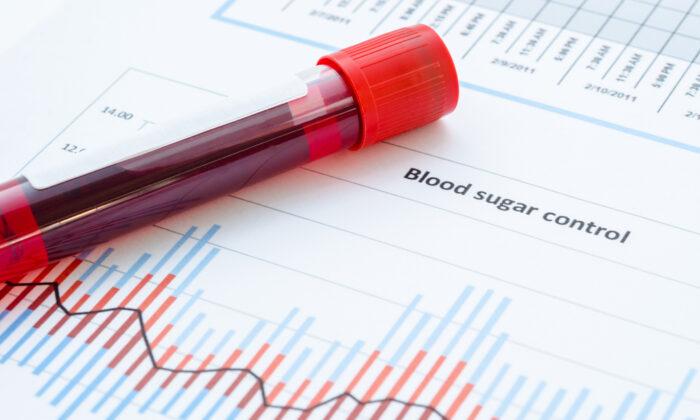Type 2 Diabetes can affect all people, regardless of age. Early symptoms of Type 2 Diabetes are often missed and you may not even know they have the condition. 1 in 3 people in the early stages of Type 2 Diabetes is not aware they have it. A common misconception is that you must appear clinically obese to have Type 2 Diabetes. Although the majority of people with Type 2 Diabetes have excess weight, they often aren’t obese. However, any excess weight, especially around the stomach, is a risk factor.
As we get older, we are also at higher risk of developing Type 2 Diabetes.
What is Diabetes?
Diabetes interferes with the body’s ability to metabolize carbohydrates for energy and leads to high levels of blood sugar. Chronically high blood sugar levels increase a person’s risk of developing serious health problems. Even if you don’t look “unhealthy” and feel okay, it is important to get your blood sugar tested if you have excess weight around the middle.Type 2 Diabetes can be life-threatening. However, if treated carefully, it can be managed or even reversed. The key is to catch it early and start managing it with lifestyle modifications and medication.
What are the Complications?
There are many potential dangerous consequences of high blood sugar. Often the issue goes unregulated for many years before the patient has their blood sugar tested. Many times, these consequences begin before a patient is ever officially diagnosed.- Nerve problems
- Vision loss
- Joint deformities
- Cardiovascular disease
- Diabetic coma (life-threatening)
6 Symptoms of Type 2 Diabetes
Frequent Urination
When there is extra sugar present in the blood, as with Type 2 Diabetes, the kidneys react by flushing it out of the blood and into the urine. The result is more urine production (and the need to go more frequently), as well as an increased risk of urinary tract infections (UTIs) in men and women.Talk to your medical provider if you go to the bathroom more often than you used to — including getting up every couple of hours during the night — and you seem to be producing more urine.
Thirst
Although people with Type 2 Diabetes may not have specific or obvious symptoms, an increase in thirst is characteristic of the condition.Frequent urination causes you to lose a lot of fluid and become dehydrated. Consequently, you develop a dry mouth and feel thirsty more often. If you notice that you are drinking more than usual, or your mouth feels dry, these could be signs of Type 2 Diabetes. Many other medications cause dry mouth and can raise your blood sugar levels. If you are thirstier than usual, it is a good idea to detect the cause.
Being Hungry—ALL THE TIME!
People with Type 2 Diabetes have “insulin resistance” which means the body cannot use insulin properly to help glucose get into the cells.You can’t “feel” insulin resistance. It is similar in that you can’t “feel” high blood pressure without taking your blood pressure and looking at the numbers. Insulin resistance is a process happening at the cellular level. This is very different than catching the flu, feeling your pulse, or noticing weight gain by looking in the mirror. There are many health problems that we do not feel the physical effects until many years later—when our organs and tissues are affected by the damage.
In people with Type 2 Diabetes, insulin doesn’t work well in muscle, fat, and other tissues, so your pancreas (the organ that makes insulin) starts to secrete more to compensate. This insulin level sends signals to the brain that your body is hungry.
Vision Changes
The lens of the eye is a flexible membrane suspended by muscles that changes the shape of the lens to focus the eye. In a high-sugar environment, such as with uncontrolled Type 2 Diabetes, the lens’s ability to bend is altered. Although the lens is not damaged, the muscles of the eye have to work harder to focus.Blurred vision occurs when there are rapid changes in blood sugar — from low to high or high to low — to which the eye muscles have not yet adapted. This is one of the early warning signs of Type 2 Diabetes. The body later adapts to the sugar levels and your vision will go back to normal (at least for a little while).
Frequent UTI’s & Infections
People with Type 2 Diabetes are twice as likely to get a UTI as people without the condition. Both yeast and bacteria proliferate more quickly when blood sugar levels are elevated. Women with diabetes or prediabetes will experience and are at greater risk of feminine health issues like bacterial infections, yeast infections, and vaginal thrush. This is especially true when blood sugar isn’t well controlled.Problems with Your Feet
Over time, prolonged exposure to high blood sugar can damage the nerves throughout the body — a condition called “diabetic neuropathy.” Some people may not experience symptoms of the damage, while others may notice numbness, tingling, or pain in the extremities. It is most common in people who have had Type 2 Diabetes for 25 years or more and can occur in people who have prediabetes as well.This story was originally published in the OnePeak Medical Center Blog.





